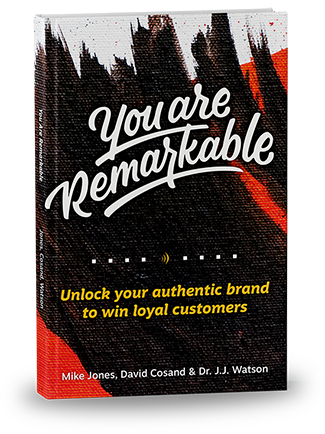A few months back, I wrote about why AI won’t save your B2B marketing. The post sparked a few conversations with some of my professional services marketer friends about how to use AI in content marketing without compromising your brand. These discussions led me to develop what I call the “Ten AI Use Commandments for Marketers” – principles to guide your use of AI while preserving what makes your brand remarkable.
Why We Need AI Use Commandments
AI tools, such as Claude and ChatGPT, offer impressive and tempting analysis and creation tools. But these capabilities lead too many professional services marketers to embrace AI without considering its impact on their brands. In their rush to automate content creation and scale their marketing efforts, they risk stripping away the very elements that make their brands worth noticing. Their efficiency-first approach threatens both their brand authenticity and their ability to build meaningful relationships with clients.
The Ten Commandments of Using AI in Content Marketing
1. Preserve Your Brand’s Authenticity
AI excels at generating content, but it can’t replicate your firm’s unique perspective and experience. When you let AI drive your content without injecting your point of view, you risk commoditizing your brand and blending in with your market’s background noise.
2. Keep Strategy Human
AI makes an excellent assistant but a poor strategist. While it can process vast amounts of data and suggest approaches, it can’t make the intuitive connections that lead to breakthrough marketing strategies. Your strategic thinking, combined with AI’s capabilities, creates more powerful results than either alone.
3. Build Smart, Detailed Prompts
The quality of AI output directly reflects your input quality. Feed it your brand guidelines, voice characteristics, and specific examples of content that embodies your brand. Generic prompts produce generic results.
4. Add Your Layer of Thought
Don’t just copy and paste AI-generated content. Apply your expertise, add specific examples from your experience, and inject your brand’s perspective. This human layer transforms adequate content into compelling thought leadership.
5. Think Before You Prompt
Approach AI with clear intent and direction. Know what you want to accomplish and why it matters to your audience. Your brand’s purpose, values, and mission should guide every interaction with AI tools.
6. Own Your Brand Building
AI can support brand building, but it shouldn’t lead it. Your brand emerges from your firm’s culture, expertise, and relationships. These human elements resist automation and deserve your direct attention.
7. Delegate Repetitive Tasks
AI shines at handling routine tasks that drain your creative energy. Let it handle initial research, format consistency checks, and basic content organization. This frees you to focus on strategic thinking and relationship building.
8. Develop Your AI Policy
Create clear guidelines for how your firm uses AI in marketing. Define when to use it, when not to, and how to maintain brand consistency across AI-assisted content. Share these guidelines with your team to ensure consistent application.
9. Avoid the Shortcut Mentality
AI isn’t a bypass around strategic thinking and creative development. View it as a tool that enhances your marketing capabilities rather than a replacement for human insight and creativity.
10. Keep Content Creation Semi-Automated
Full automation of content creation leads to bland, derivative marketing that fails to connect with your audience. Maintain human oversight and input at critical stages of content development.
Putting the Commandments into Practice
These principles might seem obvious, but their application requires discipline. Here’s how to integrate them into your marketing process:
Start with Strategy
Before you engage AI, define your content strategy and goals. What do you want your audience to think, feel, or do? How does this piece of content advance your brand strategy?
Create Content Workflows
Develop processes that combine AI efficiency with human expertise. For example:
- Use AI for initial research and topic exploration
- Apply human insight to identify unique angles
- Let AI assist with structure and organization
- Add your specific examples and insights
- Have humans edit for voice and brand alignment
Build Brand Guidelines
Document your brand voice, tone, and messaging principles in a format you can share with your AI tools. Include examples of both what to do and what to avoid. For example, I instruct my AI to avoid clichés (“In today’s world”) and a condescending tone (“Remember to do this.”)
Train Your Team
Help your marketing team understand how to use AI while maintaining brand standards. Share successful examples and create best practices to improve your collective results.
The Future of AI and Brand Building
These commandments will evolve as AI capabilities advance, but their core principle remains constant: AI works best as a complement to human creativity and strategic thinking, not a replacement for it.
Professional services marketing succeeds through relationships and trust. While AI can help you reach more people more efficiently, it can’t build the authentic connections that drive business growth. That remains a fundamental human task.
As you experiment with AI in your marketing, keep these commandments in mind. They’ll help you harness AI’s power while preserving your brand’s soul – the authentic, human elements that make your brand remarkable.What’s your experience with AI in brand building? How do you balance efficiency with authenticity? Share your thoughts at [email protected].



